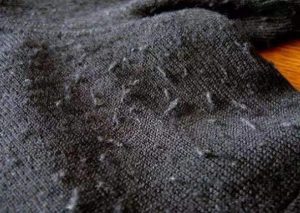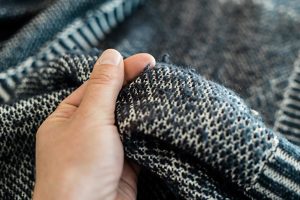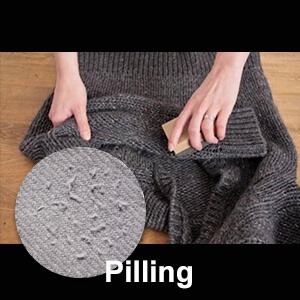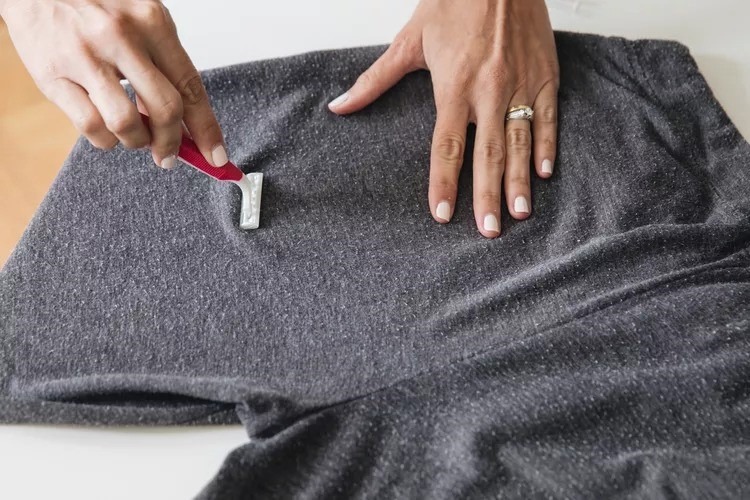Nothing is more frustrating than finding tiny fuzz balls covering your favorite clothing. Fabric pilling not only makes your clothes look worn out, but it can also be challenging to remove. Whether it’s your cozy sweater or your favorite jacket, pilling can occur on any fabric exposed to friction over time. Luckily, there are simple and effective ways to deal with this problem and keep your garments looking fresh.
What Is Fabric Pilling?
Fabric pills are those small, fuzzy balls that appear on the surface of clothes. These occur when loose fibers on the fabric’s surface break away and clump together, often attracting dust or lint. This creates a snowball effect—if left unchecked, the pills continue to accumulate, making the fabric look even worse.

Why Does Pilling Happen?
Pilling is primarily caused by friction. Every time your clothes rub against something, whether it’s from washing or everyday wear, the fibers start loosening. Areas like underarms or spots where bags rest against the fabric are particularly prone to pilling because they face constant friction.
Poor washing habits also play a role in this. Not following the recommended care instructions can prematurely weaken the fabric fibers. For example, using hot water or tossing delicate items in the dryer instead of air drying can lead to faster pilling.
Does Pilling Mean Your Clothes Are Low Quality?
Not necessarily. Even high-quality fabrics, such as cashmere or fine wool, can pill over time. Pilling is more about how the fabric is treated rather than the quality itself. Softer fabrics are particularly prone to pilling because their fibers are more delicate. Blended fabrics, like cotton-polyester mixes, are also common culprits as the weaker fibers in the blend break away while the stronger ones hold them in place.
How to Remove Fabric Pilling
Fortunately, you don’t need to throw out your favorite clothes just because of some pilling. There are several simple methods to remove those pesky fuzz balls without damaging the fabric.

1. Fabric Shaver
A fabric shaver, also known as a lint shaver or fuzz remover, is a highly effective tool designed specifically for removing pills. Gently glide the shaver over the fabric, keeping it flat, and watch as the pills are safely shaved away. You can buy one from Daraz.
2. Disposable Razor
In a pinch, a disposable razor can be used to shave off the pills. Be careful, though—always hold the fabric taut and use light, gentle strokes to avoid cutting into the garment itself.
3. Sweater Stone
A sweater stone, made of materials like pumice or recycled glass, can gently remove pills from delicate knitwear. Rub it over the pilled area in small, circular motions, but be sure to test it on an inconspicuous part of the garment first.
4. Toothbrush
A soft-bristle toothbrush can also help remove pills from fabrics like fleece. Brush in one direction to loosen and remove the fuzz.

How to Prevent Pilling
The best way to deal with fabric pilling is to prevent it from happening in the first place. Here are a few ways to protect your clothing:
Wash less frequently. Washing your clothes too often accelerates wear and tear. When possible, opt for spot cleaning instead of a full wash.
Follow the care label. Pay attention to washing instructions, especially for delicate fabrics. Using cold water, a gentle detergent, and avoiding the dryer can help keep your clothes in better condition.
Turn clothes inside out. This simple trick reduces the amount of friction that the outer fabric experiences during washing.
Use fabric softener or vinegar. Adding these to your laundry can help reduce friction between garments, minimizing pilling.
Wash on delicate cycles. Overloading your washing machine causes clothes to rub against each other more aggressively, so opt for smaller loads and gentler wash cycles to avoid unnecessary friction.

Final Thoughts
Fabric pilling is a natural part of wear and tear, but it doesn’t have to be the end of your favorite clothing items. With a little care and the right tools, you can keep your wardrobe looking pristine and prolong the life of your clothes.










